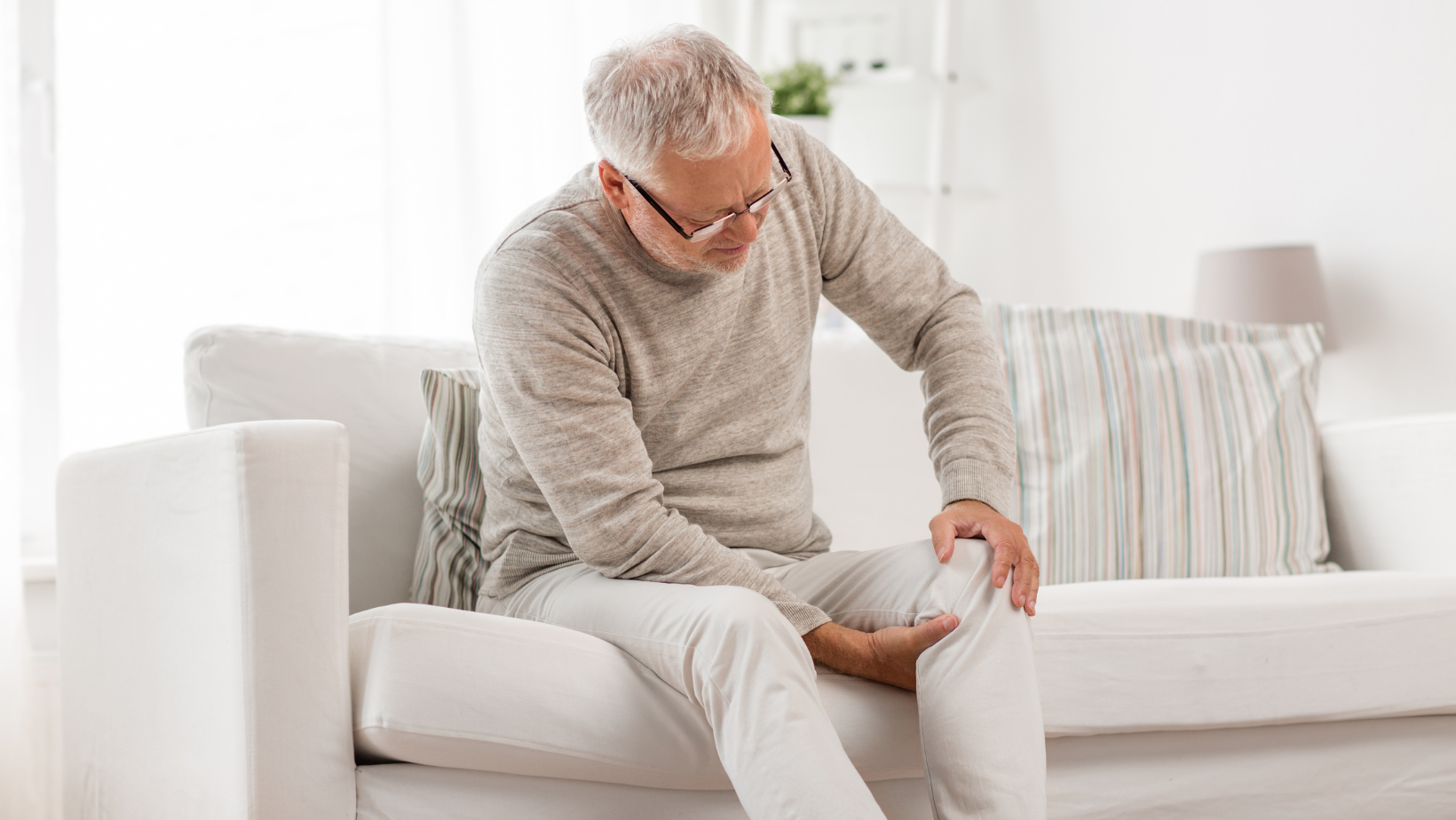Category
Knee pain is a prevalent issue affecting people across different age groups and lifestyles.

Have any questions?
If you have any questions, feel free to contact us at [email protected]. A member of our support team will help you shortly.
Share this blog
Fatigue
Energy
Stress
Sleep
Knee pain is a prevalent issue affecting people across different age groups and lifestyles. The knee joint, a complex structure that bears the body's weight, is susceptible to various conditions that can lead to discomfort and limited mobility. Understanding the diverse causes of knee pain, recognizing symptoms, and exploring effective management strategies are crucial for alleviating pain and promoting optimal knee health. This article will delve into the numerous factors contributing to knee pain, examine common causes, and provide insights into seeking effective management.
Osteoarthritis, a degenerative joint condition, can lead to the breakdown of cartilage in the knee, causing pain, stiffness, and reduced range of motion.
An autoimmune condition, rheumatoid arthritis can cause inflammation in the knee joints, leading to pain and swelling.
The meniscus, a cartilage that acts as a cushion in the knee joint, can tear due to sudden twisting movements or wear and tear over time, resulting in pain and swelling.
ACL injuries, often seen in athletes, can cause severe knee pain and instability, particularly during activities that involve sudden stops or changes in direction.
Inflammation of the patellar tendon, commonly known as the jumper's knee, can result in pain around the kneecap, especially in activities that involve jumping or repetitive knee bending.
Inflammation of the bursae, tiny sacs that cushion the knee joint, can lead to bursitis and cause pain, swelling, and warmth around the knee.
Overuse of the IT band, a fibrous tissue that runs along the outside of the thigh, can result in knee pain, especially in runners and cyclists.
Dislocation or subluxation of the knee joint can occur due to trauma, causing immediate pain and instability.
Gout, a form of arthritis, can cause the buildup of uric acid crystals in the knee joint, leading to sudden and severe pain.
Repetitive use or strain on the knee joint daily in certain sports or occupations can lead to overuse injuries and subsequent pain.
Pain in and around the knee, ranging from mild discomfort to severe, sharp pain.
Swelling or puffiness around the knee joint, often accompanied by warmth to the touch.
Reduced flexibility and stiffness, making it challenging to bend or straighten the knee fully.
A feeling of instability or weakness in the knee, especially during weight-bearing activities.
Audible sounds like popping or clicking during movement, which may indicate issues with the joint or cartilage.
Redness or discoloration around the knee may be a sign of inflammation.
Difficulty or pain while walking, particularly when putting weight on the affected knee.
Difficulty achieving the full range of motion in the knee, affecting activities like bending, squatting, or kneeling.
Resting the knee and applying ice can help reduce inflammation and relieve pain.
Using compression bandages and elevating the leg can help control swelling.
Non-prescription pain relievers, such as ibuprofen or acetaminophen, can help manage pain and reduce inflammation.
A physical therapist can provide targeted exercises to strengthen the muscles around the knee, improve flexibility, and address underlying issues.
Using knee braces or supportive devices can help stabilize the knee and reduce strain.
In cases of severe inflammation, corticosteroid injections may be recommended to reduce swelling and alleviate pain.
Removing excess fluid from the knee joint can relieve pain associated with bursitis.
Maintaining a healthy weight reduces the load on the knee joints and can alleviate pain.
In cases of severe injuries or conditions that do not respond to conservative treatments, orthopedic interventions such as arthroscopy or joint replacement may be considered.
Adjusting daily activities, exercise routines, and footwear can help prevent further knee strain.
If knee pain persists or worsens despite rest and home remedies, consult a healthcare professional for a thorough evaluation.
If knee pain results from a significant injury, such as a dislocation or fracture, seek immediate medical attention.
Seek professional guidance if there is a significant reduction in knee movement or if the pain interferes with daily activities.
If signs of infection, such as increasing swelling, redness, or warmth around the knee joint, seek prompt medical attention.
Knee pain can arise from various causes, and effective management depends on understanding the underlying factors contributing to the discomfort. While many cases can be addressed with self-care measures, persistent or severe knee pain warrants professional evaluation to identify and address the root cause. By adopting preventive measures, engaging in appropriate exercises, and seeking medical attention, individuals can effectively manage knee pain, enhance knee function, and improve overall quality of life.